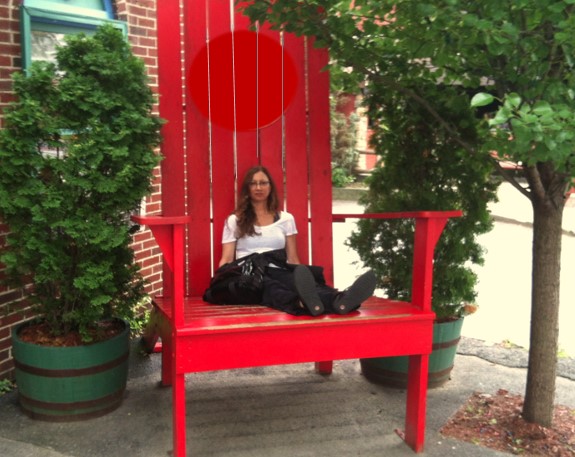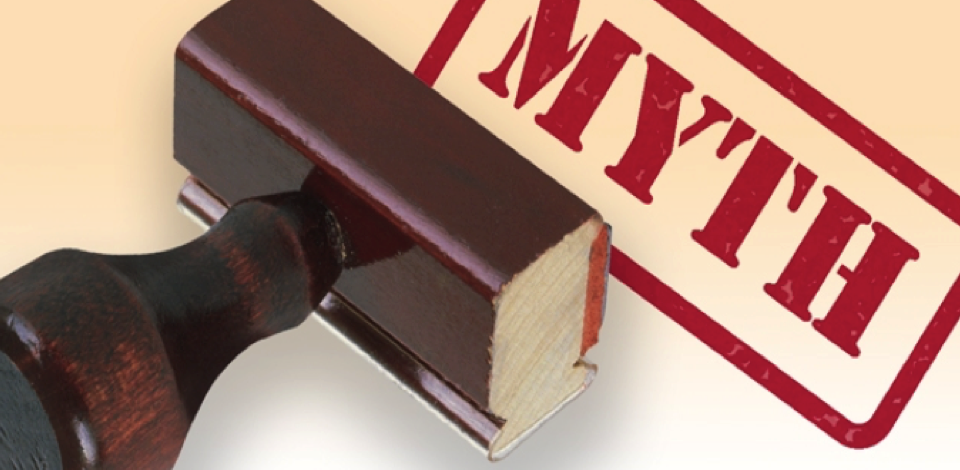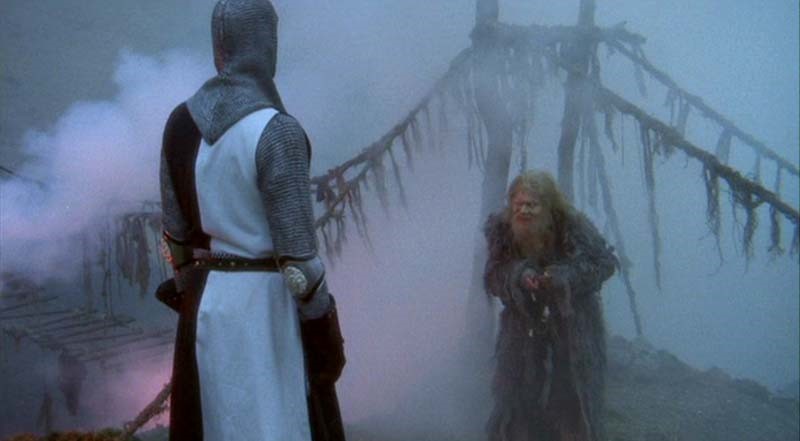 Todd Cherches | Comments Off |
Todd Cherches | Comments Off |  Careers,
Careers,  Interviewing,
Interviewing,  Thinking,
Thinking,  jobs,
jobs,  leadership,
leadership,  meetings
meetings  Friday, February 24, 2017 at 1:37AM
Friday, February 24, 2017 at 1:37AM 
So, you have an important job interview scheduled, or a big meeting coming up with the boss or with an important client. You’ve done your homework and you’re prepared, primed, and pumped up.
But have you thought about your thinking speed?
We all know that interviews and high-stakes meetings can be very stressful, and when nerves flare up our tendency is to think and talk too fast, leading to our potentially blowing that meeting that we prepared so long and so hard for.
In his best-selling, award-winning book “Thinking, Fast and Slow,” Daniel Kahneman takes a deep dive into how we think – and shows us how we can be more effective...simply by slowing down. According to Kahneman, one of the biggest problems is that we tend to -- especially when under stress -- think too fast.
When your brain reacts and responds automatically and instinctively – almost thinking without really thinking, that’s what he calls “thinking fast.” This is how we think most of the time. On the other hand, “thinking slow” is when your brain hits the pause button and takes a brief moment to consciously reason, consider, question, analyze, and decide -- before responding or acting.
Of course “thinking fast” is a good thing. We couldn’t possibly – and wouldn’t want to – have to over-analyze every single thought before responding. But, on the flipside, how often do we make mistakes because we jump to conclusions or have impulsive, knee-jerk reactions when we might have benefited from pausing, even momentarily, to devise a more well-considered response?
So how can you leverage the power of “thinking slow” when on the spot in your next meeting or job interview?
One simple and powerful way to do so is by keeping in mind this extremely effective storytelling technique called “PARLA.”
PARLA stands for Problem, Action, Result, Learning, & Application.
Let's say the interviewer asks you a question like, "Can you tell me about a time wherein you faced a similar situation?" or you're in a sales meeting and the potential client asks, "Have you ever worked with a company like ours before?" In either scenario, you might use the PARLA method to structure your 5-part response as follows:
P – Problem: Let me tell you about the time I faced a similar situation...;
A – Action: Here’s the action I took...;
R – Result: Here’s the outcome of that action...;
L – Learning: Here’s what I learned...;
A – Application: And (*this is the most important and relevant part to the listener) here’s how I would apply what I learned from that prior experience in the future....
Very often when an interviewer or a potential client asks us a question, what often happens -- in our excitement and enthusiasm to convince them to choose us -- we excitedly blurt out something like, “Because I have a degree in x, and ten years’ experience, and I’m a hard worker, and a team player, and blah blah blah.” Not only are we thinking fast, we’re talking fast, and often just rambling on and on. And that’s exactly what so many people do.
Instead, why not try to differentiate yourself by taking a breath and a brief, two-second pause...followed by a confident, PARLA-based story that will make you stand out from the crowd.
One time a new potential client asked me "How much experience do you have working with millennials?"
My PARLA-structured response: “I've definitely spent a lot of time working with millennials! In fact, I teach a graduate course in 'Leadership & Team Building' in the HR Master's program at NYU -- and most of my students are millennials. And I've worked with a number of tech start-ups who have mainly millennial populations ("Problem"). One of the things I always make sure of when training millennials is to keep things as fast-paced, varied, and highly-interactive as possible ("Action"). I've found that when I do, it dramatically increases their attention, comprehension, and retention ("Result"). So every one of my training programs is designed and delivered with my company's "3 E's" -- Educate, Engage, and Excite -- in mind ("Learning"). And, so, I would definitely make sure that any leadership program we do for your millennial employees is highly interactive and experiential as well ("Application").
It's that simple: PARLA.
By the way, the "P" for "Problem" just refers to the comparable challenge, issue, or situation you're using as an example.
And note that even if things didn’t go well in the Results phase of your example, what’s important is that you took an Action to address a Problem, and that you Learned something valuable from it that you can Apply going forward. And, in truth, that’s really what the interviewer is, ultimately, looking for: whether or not you have the relevant experience and the capability to do the job.
Lastly, PARLA is not just a storytelling technique for use when BEING interviewed or trying to persuade someone; it is actually a classic behavioral interviewing technique that an interviewer may use to question you! If an interviewer ever starts a sentence with, “Tell me about a time when…” you will now immediately recognize that that is what they’re doing…and what they are looking for in terms of a response. So (not to give away any behind-the-scenes interviewing secrets :), but now that you are aware of this very popular interviewing methodology, going forward you will be better equipped, and can be better prepared, to respond on the spot.
Seizing the opportunity to tell a powerful, well-structured personal story using the PARLA format will capture and hold the interviewer’s attention, bring your experience to life, shows that you can think on your feet, and demonstrates with poise and confidence that you have what it takes to do the job...because you’ve been there before.
That’s the power of “thinking slow” in action.
For additional resources to help you improve your thinking skills, please check out my blog post entitled, “15 Fascinating Books to Help You Become a Better Thinker.”

 Todd Cherches | Comments Off |
Todd Cherches | Comments Off |  Careers,
Careers,  Interviewing,
Interviewing,  Thinking,
Thinking,  jobs,
jobs,  leadership,
leadership,  meetings
meetings  Friday, August 19, 2016 at 4:47PM
Friday, August 19, 2016 at 4:47PM 
One of the great pleasures of summertime is popping into a Baskin-Robbins and trying out a few different flavors with those little pink spoons. Who doesn't love those little pink spoons!
Between you and me, 90% of the time I just end up getting Rocky Road anyway, but it's always fun to taste a few other flavors before ordering my cone. (*Although, if you're gonna do that, you better make sure that Larry David is not standing in line behind you!)
If you think about it, though, why is Baskin-Robbins so willing to give away their product for free? Of course, it’s simple and obvious: they hope that by giving us a free taste, we’ll end up buying a cup or a cone or a pint or a gallon. So they gladly give away millions of little pink spoonfuls in order to make many millions of dollars more in return. It’s the same reason movies show trailers, cosmetics companies give away free samples, and car dealers offer test drives: people want to try before they buy.
So, with this concept in mind, how might you apply the Little Pink Spoon principle to your job search in order to increase your odds of getting hired? Simply put, by giving a prospective employer a “free taste” of what you have to offer!
Three ways to leverage the power of the Little Pink Spoon approach in your job search using "the Three Shows": Show & Tell; Show Them That You Can Do It; and Show Them That You Really Want it...
[1] Show & Tell: No, "show & tell" is not just for kindergarteners. Verbally telling an interviewer how your background qualifies you for the job is one thing; visually showing them is another. As research has shown, vision trumps all other senses. John Medina states in his fascinating book "Brain Rules" that when people hear information, three days later they'll remember 10% of what they heard; but if they see it, they'll remember 65% of what they saw.
So what can you do to become more memorable? Be more visual! Bring stuff to the interview with you that you can show: Samples of work you’ve produced, reports or PowerPoint presentations you’ve created, photos of projects you've worked on, awards you’ve received, copies of articles or blog posts you've written. Even if the interviewer doesn't take the time to read or even look at what you brought, just holding it up and showing it to them makes it real...more real than just telling them about it. And having these samples handy is a great way to visually remind yourself of real-life stories you can use when asked, "Tell me about a time when..." or "Give me an example of...."
Even if you are not an artist, it doesn’t mean that you can’t put together a "portfolio" of your career accomplishments. You may even want to create a "visual bio/resume" or a personal marketing kit to supplement your traditional CV. As Dan Pink reminds us in his recent book, "To Sell is Human," we are ALL in sales. And, when you are interviewing, what you are selling is yourself. Because so few people outside of the design world think of creating a portfolio of their work, your proactivity and creativity in doing so will definitely help you stand out from the crowd.
[2] Show Them That You Can Do It: While job interviews can sometimes feel more like a one-way interrogation than a two-way conversation, there are things that you can strategically and proactively do to turn the discussion into a dialogue and a demonstration of your capabilities. Ultimately, what you want to do is to get the interviewer to change their perception of you from "an interviewee" to "an employee" by getting them to actually envision you working there.
One way of doing this might be to ask the interviewer to give you an example of a real-world business challenge that you would be facing if you were to be hired for this role. By taking off your "interviewee hat" and putting on your “consultant hat” and asking thoughtful questions, you probably won't solve their puzzle right then and there, but you'll be perceived as someone who is ready, willing, and able to get to work. Earlier in my career, when I asked my new boss at Disney why he hired me over a few other candidates who were more qualified, his response was: "Because you asked the best questions."
Another way you can show what you can do is by providing an example of your abilities using the PARLA model that I discussed in more detail in a previous post. In short, you can demonstrate your potential to do the job you're interviewing for by describing: a relevant PROBLEM you previously faced; the ACTION you took; the RESULT of that action; what you LEARNED from that experience; and how you would APPLY that knowledge in this role.
After the interview, to further demonstrate your potential, you might email them some additional thoughts and ideas, along with your thank-you note. This will further demonstrate your professionalism and capability, as well as reinforcing that you really want the job...
[3] Show Them That You Really Want It: It's one thing to show that you can DO the job; it's another thing to demonstrate that you really WANT the job. Earlier in my career I was crushed to not be offered a job that I thought I was perfect for. When I asked the hiring manager for some feedback after the decision had been made, he responded that, "It didn't seem to me that you were that enthusiastic about this position. We need people who are passionate about working here." Lesson learned: People aren't mind-readers, so make sure they know how much you want the job (assuming you really do).
Secondly, here's a question to consider: Are you potentially willing to work for free? Of course, you need to earn a living and don’t want to undervalue yourself. But, just as you might want to taste a new flavor before purchasing a whole cone, the prospective employer might be on the fence about hiring you, or might not yet be ready to make a permanent offer. So might there be some other way for you to show how much you have to offer and how much you want to work there? It’s not always possible, but what if you could start out as a volunteer or an intern, or in a temp-to-perm situation, or on a consulting or project or trial basis? This might not be an option, but it never hurts to be creative and open to exploring out-of-the-box possibilities as a way of getting your foot in the door!
In closing, from my experience, if you can "show" these three things -- real-world examples of your previous work accomplishments, that you have what it takes to do the job, and how much you really want it -- you will dramatically improve your odds of getting the job.
So, as you prepare for your next interview, think about how you might give people a "little pink spoon-sized taste" of who you are and what you have to offer so that they will want to buy the entire cone...along with some sprinkles, whipped cream, and a cherry on top as well.
OK, blog post done … time for some ice cream!
*If you have your own examples of the Little Pink Spoon principle in action, please feel free to share them with us...
 Todd Cherches | Comments Off |
Todd Cherches | Comments Off |  Baskin-Robbins,
Baskin-Robbins,  Careers,
Careers,  Interviewing,
Interviewing,  Little Pink Spoon
Little Pink Spoon  Sunday, August 2, 2015 at 4:36PM
Sunday, August 2, 2015 at 4:36PM 
In my last Hired Guns post, we discussed:
Five Myths About Millennials That Boomers and Gen Xers Need to Let Go Of;
and previously explored Five Things Millennials Need to Know When Being Interviewed By a Baby Boomer.
Now in this, the third of a four-part series on generational issues in the workplace, we want to flip the traditional hierarchy on its head and discuss the increasingly common occurrence of how (and why) Baby Boomers and Gen Xers need to think, and act, a little bit differently when it is a Millennial who is in charge.
Click here for our discussion on how the tables have turned...and what we can do about it.
 Todd Cherches | Comments Off |
Todd Cherches | Comments Off |  Wednesday, July 15, 2015 at 1:54AM
Wednesday, July 15, 2015 at 1:54AM 
One of the hottest topics out there right now is the subject of generational differences in the workplace.
And there are a lot of myths -- and myth-conceptions -- floating around.
In this second in a series of posts co-written with generational expert Brad Szollose, this piece is directed towards Boomers and Gen Xers to help view the increasingly challenging Millennial situation with fresh eyes.
Click here to read the full piece.
 Todd Cherches | Comments Off |
Todd Cherches | Comments Off |  Wednesday, July 15, 2015 at 1:47AM
Wednesday, July 15, 2015 at 1:47AM 
One of the hottest topics out there right now is the subject of generational differences in the workplace.
So how do we bridge this generational divide?
In this first in a series of posts co-written with generational expert Brad Szollose, this piece is directed towards Millennials to give them a few things to think about when dealing with Baby Boomers.
Click here to read the full piece.
 Todd Cherches | Comments Off |
Todd Cherches | Comments Off |